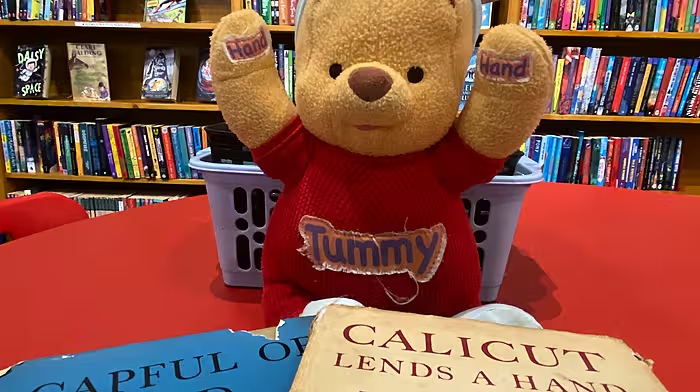With walking becoming a major pastime for tourists and locals alike, Pauline Murphy delves into the fascinating – and dark – story that’s behind the Rabach’s Way in Beara
ON the Ring of Beara you will find the ruggedly remote Rabach’s Glen, tucked under the Caha mountains.
Straddling the Cork-Kerry border, the glen attracts walkers who take ‘The Rabach Way’, a route dotted with pre-famine era cottages. Venturing deeper into the glen you will find the ruins of a stone cottage which was once the dwelling of Corneilius ‘The Rabach’ O’Sullivan, and beyond that is the cave where he hid from the authorities following two murders he committed in the tranquillglen in the 1800s.
Corneilius O’Sullivan was known better as the Rabach – in old Irish ‘daring’ and ‘wreckless’.
He was a tenant farmer and his home was the biggest of the stone cottages in the glen and it was at this dwelling the Rabach carried out his first murder.
In 1801 a British sailor deserted his ship at Castletownbere and fled on foot over the mountains. He followed a goat’s path which led him into the Rabach’s glen. Cold and hungry, he knocked on the door of the first cottage he came across, which was that of the Rabach.
The Rabach welcomed the desperate sailor into his home where he gave him food and a drop of poitín to warm him up. The poitín loosened the sailor’s tongue and he told the Rabach about a bag of sovereigns he stole from the ship he had deserted. The Rabach gave the sailor more poitin until he passed out, then callously cut his throat and took the bag of coins, legend has it.
The Rabach buried the sailor in a bog hole but, he was seen by his uncle’s wife Maire Caoch who lived nearby, and was joint tenant on the Rabach’s mountain farm. She kept silent for years, due to the fear she had of the Rabach.
One day in 1815 Maire found herself in an argument with the Rabach. His uncle had recently died and he started a campaign of harassment against widow Maire.
With the money he stole from the sailor, the Rabach had bought more sheep and cows. With his enhanced stock he needed more room so he encroached on Maire’s patch. For a long time she endured the Rabach’s bullying tactics until one day she could take it no more.
Maire confronted the Rabach about the encroachment onto her part of the property and a heated argument erupted. During the exchange of words, Maire blurted out that she knew he had killed the sailor and used his money to buy the livestock. Poor Marie then became the Rabach’s second victim.
The Rabach strangled Maire and left her body face down in the nearby river to make it look like she had drowned but, like his previous dark deed, it was seen by a neighbour. Daniel Sullivan was tending to his sheep high up on a rocky outcrop overlooking the glen when he saw the Rabach kill Maire. Daniel was terrified of the Rabach so he kept his mouth shut and moved out of the glen.
Years later, in 1830, he suffered a serious accident while working in the Allihies mines. While on his death bed Daniel confessed to a priest about the murder he saw in the Rabach’s Glen. A magistrate was called for and Daniel gave his deposition upon oath.
The authorities rode into the glen for the Rabach but he fled his cottage and took to the rocky slopes of the glen, where he hid in a cave.
The Rabach evaded capture for a number of months, until one night he left the cave to visit his wife who was due to give birth.
It was a stormy night and he did not expect the authorities to be out on such a bad night but two constables from Kenmare were placed on a constant watch in the glen. Constables John Cashell and George Allen pounced when they saw the Rabach going into his cottage. He was taken from the glen in handcuffs and sent to Tralee gaol. In a tragic twist, The Rabach’s son was stillborn.
The Rabach confessed to his murderous deeds and he was hanged outside Tralee courthouse in the spring of 1831.
The cave is now known as Pluais an Rabach – or Rabach’s Den. The last occupants of the glen left in the 1950s, leaving behind ghosts from a dark past.










